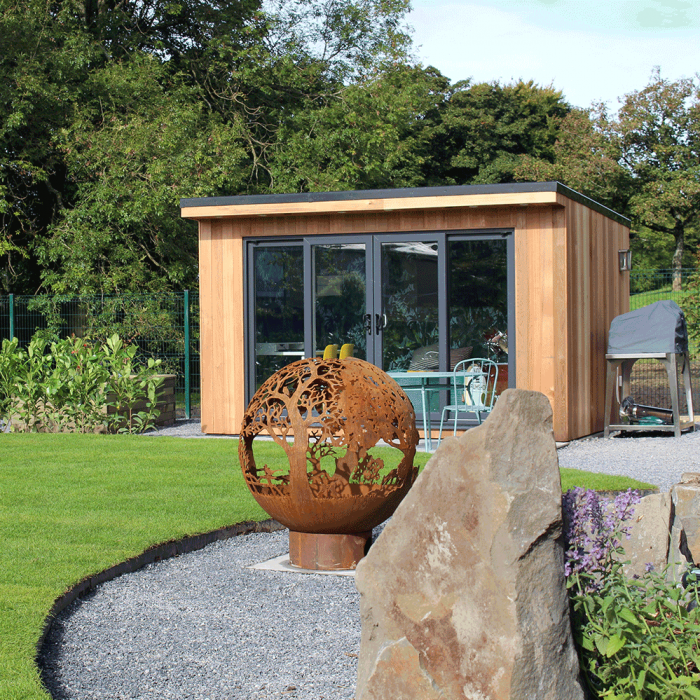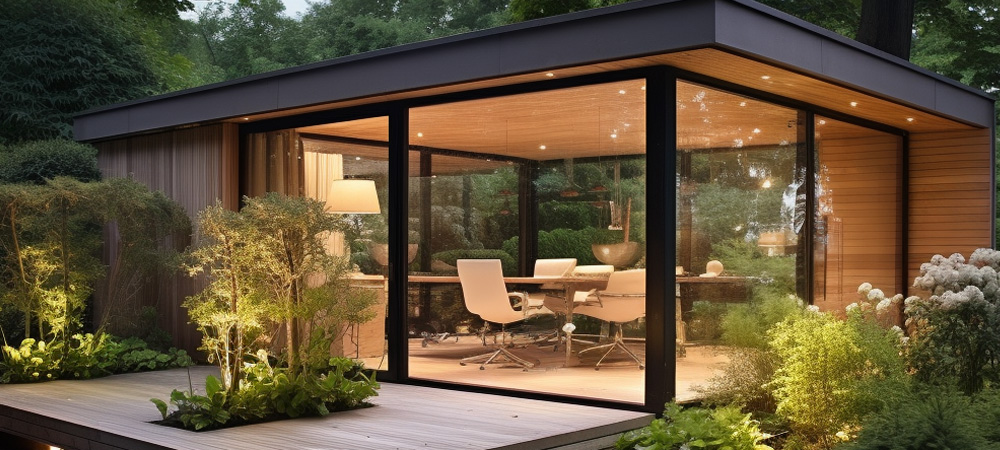Best Info On Planning Permission For Garden Summer Houses
Wiki Article
What Planning Permission Do You Need For Gardens, Etc. In Terms Of Highways Concerns?
Highways-related issues, regardless of whether related to the building of conservatories, gardens offices or outhouses, or even extensions and gardens could have a major impact on the need for planning permission. Here are the main considerations: Visibility and Sight Lines:
Planning permission is required if the structure impacts drivers' vision lines or intersections at junctions or bends in the road. The planning authority will determine if the building poses any risk to road safety.
Highway proximity
Typically, buildings near the highway, such as extensions or front gardens that are close to the street need planning permission. The distance between the building and highway is also controlled to prevent any interference.
Access and Egress
It is likely that planning permission will be required for changes to the existing access points or to create new ones. It is important to ensure that all access points and exits are secure, and don't disrupt traffic.
Parking Arrangement:
Planning permission is required for any new construction that requires parking or alter existing spaces. The planning authority will assess whether the proposed development is able to accommodate enough parking spaces or doesn't cause congestion on the streets.
Traffic Generation
Planning permission is required to permit any development expected to increase traffic levels like a garden office used by a company with clients who are visiting. The level of traffic in the area and road safety are assessed.
Effect on Pedestrian Access
Planning permission is required if the proposed structure is a threat to sidewalks or walkways. Making sure that pedestrian access is not obstructed and remains safe is an important consideration.
Impact of Construction on Highways
Planning permission may be needed to limit the impact that construction activities cause on roads. The planning authorities are able to establish conditions that limit disruptions on the road network during construction.
Drainage and water runoff
Another consideration is the impact of the project on drainage and runoff water, especially the way it affects roads. The permission for planning will ensure that the proposed structure does not exacerbate drainage or flooding problems that might impact the road.
Street Furniture and Utilities
A planning permit is required for any building that could impact street furniture like lampposts, signs, or underground utilities such as water pipes and electrical cables. The planning authorities will collaborate with agencies to resolve these problems.
Highway Authority Guidelines
The local highway authority could have specific guidelines and requirements regarding developments close to highways. The planning permit will guarantee that these rules are adhered to in order to keep the safety and efficiency of roads.
Noise and disturbances caused by traffic
Planning permission is required for any new structure that will increase traffic noise and disturbance (e.g. a garden office which receives visitors or deliveries).
Public Transport Accessibility
The planning permission is needed for developments that could be detrimental to public transport facilities, such as bus stops or stations. Planning permission is required for projects that may impact public transport infrastructure, such as bus stops or train stations.
In summary, highways concerns are a significant aspect in the planning permission process for conservatories, garden rooms, outhouses, garden offices or extensions. It is crucial to make sure that any development does not adversely affect safety on the road as well as pedestrian access. Contact the local planning authority and the highway authority at a very early stage of the planning process to address these concerns. See the top rated garden rooms modern for website examples including 4m x 4m garden room, what size garden room without planning permission, garden out house, garden room conservatory, garden room conservatory, garden rooms hertfordshire, garden rooms near me, garden room conservatory, garden rooms in St Albans, 4m x 4m garden room and more.

What Planning Permission Do You Need For Garden Rooms Etc In Terms Of Height Restrictions?
The height of gardens and conservatories, as well as outhouses, office buildings, or extension will decide if or not a permit for planning is required. Here are some of the most important dimensions you need to be aware of.
The maximum height that can be allowed for an outbuilding that is not attached (or extension) with a dual-pitched roofing system (such as the gable roof) is 4 metres.
The maximum height of any other type of roof (flat or single pitched etc.) shouldn't exceed 3 meters. ) The maximum height should not exceed 3 meters.
Proximity to boundaries:
The maximum building height cannot be more than 2.5 meters if it is within 2 meters of the property boundary. This is the case for sheds, garden rooms and similar outbuildings.
Eaves Height
The maximum height of the eaves (the height between the lowest part of the roof and the eaves) is not to exceed 2.5 meters for any structure.
Conservatories or Extensions
The maximum height of an extension of one story is 4 meters. The roof's height and walls that are parapets are also included.
Side Extensions
Extensions that extend to the side of the house must not be taller than 4 meters and must not be larger than half the width of the original.
Special Roofs
Flat roof structures are typically restricted to a maximum height of 3 metres.
Additional Restrictions to designated areas
In conservation zones, Areas of Outstanding Natural Beauty (AONB), and other designated areas, tighter height restrictions may apply, and planning permission may be needed for buildings that would otherwise be subject to permitted development rights.
Constructions in National Parks:
National Parks can have height restrictions that are similar to those of designated zones. Permission for planning is required.
Roof Design
The elevation of the top portion of the roof (excluding chimneys or antennas.) The roof's height should be taken into consideration. The need for planning permission should be considered if the height of the building exceeds the allowed development limits.
Impact on Neighbours:
Planning permission could be required for a building that is within the permissible height limits when it impacts in a significant way the sun, privacy and views of neighboring homes.
Maximum Total Height
A structure's height must not be more than 4 meters. For instance, an office building in the garden with an eaves-pitched roof must not exceed 4 meters at its tallest point.
Decking and Platforms
Any decking or platforms associated to the structure should not elevate the level of the ground more than 0.3 meters in order to avoid the need for permission to plan.
You should always check with the local planning authority to learn regarding any changes to the regulations and rules specific to. Even if the development is in the permitted development rights (PDR) local variations or property conditions may require planning permission. See the top summer house heaters for site examples including garden room permitted development, outhouse building, what size garden room without planning permission uk, costco outbuildings, out house, how to lay decking on soil, 4m x 4m garden room, best electric heater for cabin, do i need planning permission for a garden room with toilet, what size garden room without planning permission uk and more.
.jpg)
What Permissions Do You Require For Garden Rooms And Other Structures In Terms Utilities And Infrastructure When It Concerns Planning?
Utility and infrastructure considerations can affect the need for planning approval prior to the construction of gardens, conservatories, or outhouses. These are the most important factors to consider: Water Supply & Drainage
It is possible to get planning permission when the structure is linked to the local water supply or drainage system. The water authority in the area has to assess whether the structure's impact on the water supply system or the sewage system is suitable.
Gas and Electricity:
The planning permission is required when the building is to be connected to gas or electricity. It is essential to ensure that these connections meet all safety standards and building regulations.
Utility Easements
Planning permission may be required if the proposed structure is in an area that is designated for utilities and infrastructure. The local utility provider might have to approve construction within these zones.
Sewage systems and septic tanks
If the building will require a septic tank or an on-site treatment system to treat wastewater, planning permission is required. In these cases it is essential to be in compliance with standards for health and environmental regulations.
Drainage of Surface Water Management
Planning permission is required for the draining of surface water and runoff from a new structure. You may have to make steps to avoid erosion, flooding, or pollution of water.
Access to Utilities for Construction
Permission may be needed when the construction process requires temporary access to utilities, such as water (for construction reasons). Temporary connections have to meet safety and environmentally standards.
The impact on local infrastructure
It is crucial to obtain permission for planning in order to determine what impact the construction will have on local infrastructure. This comprises utilities, roads as well as other public services. Local authorities will determine whether the existing infrastructure supports the development.
Recycling and Waste Management
Planning permission could include the need to manage waste as well as recycling after construction. Waste disposal and recycling measures should be sufficient to minimize environmental impact.
Efficiency of Energy Efficiency:
Installation of energy-efficient parts or systems for renewable energy, like solar panels and heat pumps in new structures might require approval from the planning department. Environmental and building regulations are required to be met.
Telecommunications (and Internet):
If the new building requires internet or telecommunications Planning permission could be necessary. Compliance with the guidelines and standards for the infrastructure of telecommunications.
Access to Footpaths and Roads:
The creation or modification of access roads or pedestrian routes to a new construction site may require approval from the planning department. It is crucial to comply with safety regulations and standards for the construction of roads and footpaths.
Accessibility to Public Transport:
If the new structure impacts accessibility to public transportation facilities (such as trains or bus stops) Planning permission might be necessary. It is important to comply with the standards and regulations for infrastructure in public transport.
In summary, utilities and infrastructure considerations are the most important factors to consider when deciding whether planning permission is required for garden rooms, conservatories, outhouses, garden offices, or extensions. A prompt consultation with your local authority is crucial to ensure compliance with the applicable regulations and standards. View the top rated insulated garden office for blog recommendations including outhouse buildings, myouthouse, Tring garden rooms, outhouse garden rooms, outhouse, outhouse uk, luxury outhouse, outhouse uk, outhouses, do you need planning permission for a garden room and more.
